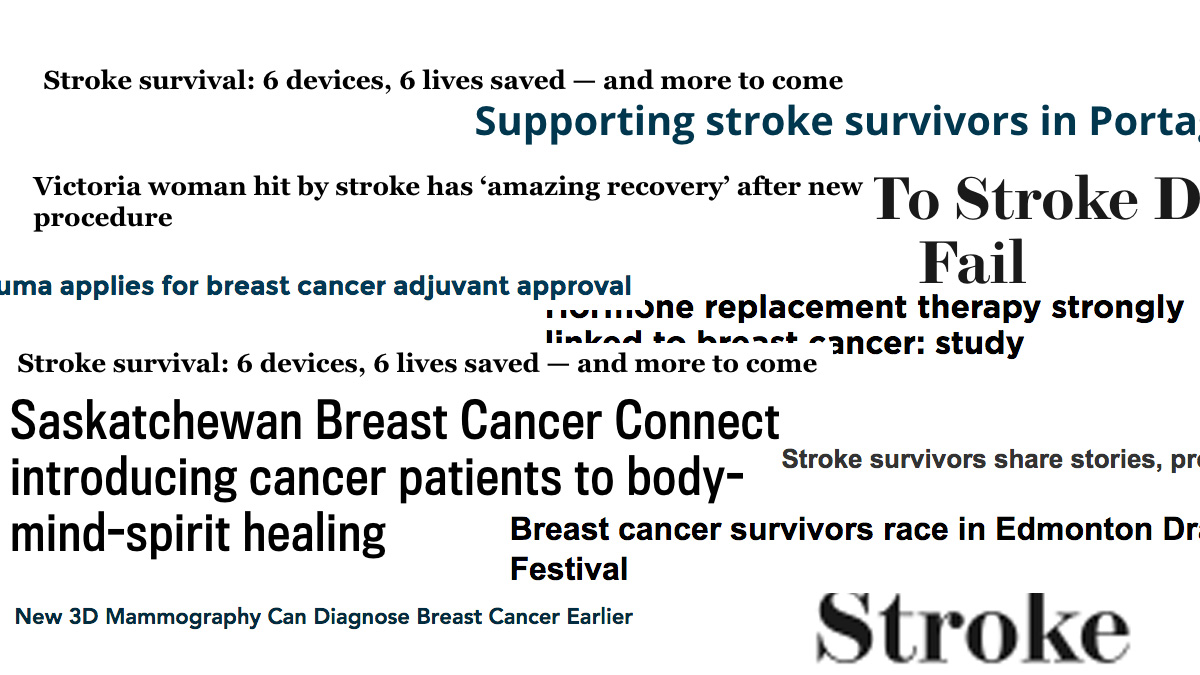 Supplied
SuppliedEdmonton women are most likely to die from heart disease and stroke but are more likely to be surrounded by breast cancer media, according to a new study.
For her master’s thesis at the University of Alberta, Claudine Champion compared portrayals of breast cancer with heart disease and stroke in local media. Media included advertisements, videos, and news articles from the Edmonton Journal, the Edmonton Sun, CTV and Global.
“(The study) goes to show that media can definitely influence health perception,” she said. “In this case for women, even though heart disease and stroke is actually the leading cause of death not many women know this.”
Champion found a higher number of media items pertaining to breast cancer than heart disease and stroke, despite the latter being more fatal to Edmonton women.
Those suffering from each disease were portrayed differently. Women with breast cancer were shown as survivors who had fought their disease, while those with heart disease and stroke were blamed for their situations, Champion said.
“People were pointing their fingers at (women with heart disease) and saying ‘You should have made better choices, it’s your fault you got diabetes’ or ‘It’s your fault you have heart disease or stroke,” she said. “Can you imagine someone seeing a breast cancer ad on TV and saying it’s the woman’s fault for getting breast cancer?”
The media ignores the reality of breast cancer by only portraying survivors who have experienced positive life transformations from their struggle, Champion said.
“In some instances (breast cancer) is just a horrible disease and it causes divorce or it causes depression, but that was never talked about.” she explained. “In human interest stories, it’s always like … ‘I feel fantastic, I feel so good, I have a greater appreciation for things around me.’ That might be true for one woman, but it’s not the case for all.”
Champion found that women with breast cancer were usually portrayed as being less than 50 years old, despite the disease’s prevalence in older women, which exaggerates the risk for younger women. She added that the media used “fear language” around breast cancer and encouraged women to be vigilant, as the disease could “strike anywhere.”
In contrast to breast cancer afflicting women “out of nowhere,” women with heart disease and stroke were shown to have chosen their condition. Portrayals of heart disease failed to consider other factors of health such as working two jobs, not having time to exercise, and being unable to afford nutritious food, Champion said.
Champion now works in the recreation and physical activity division of the provincial government. Her work on physical activity research and policy has been aided by her work on this study, she said.
“Physical activity is way more complicated than we think it is,” she said. “It’s not just about going to the gym or eating ‘healthy’ it’s way more complex.”




